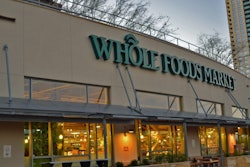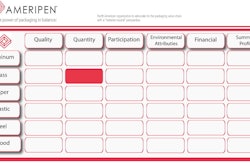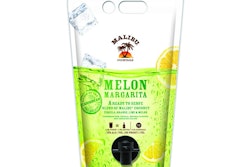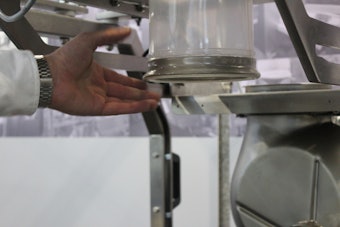"There's no good or bad packaging," Anne Roulin, global head of packaging and design at Nestlé SA, when it comes to sustainable packaging. The trick is to find "the right packaging material for the specific application," she told attendees at Pack Expo 2012 in Chicago.
To prioritize sustainable packaging development priorities, Roulin specifically cited the use, early in the packaging development cycle, of PIQET (Packaging Impact Quick Evaluation Tool). This is a lifecycle assessment software tool from
SPA that is a key tool in the global brand's "ECO-Design" initiative, and allows the company to do a multivariable packaging assessment in "about one hour" she says provides results that "would take too long and be too costly" to do in full-blown life-cycle analysis mode.
At Nestlé, more than 500 packaging specialists have used the software to model 1,000 scenarios. The company's sustainability goals, in place since 1991, have allowed the company to:
-
Reduce weight and volume of materials,
-
Lead the development and use of materials from sustainably managed renewable resources,
-
Support initiatives to recycle or recover energy from used packaging, and
-
Use recycled materials
In the past two decades, the company has been saved between 40 and 70 million kilograms of packaging materials. (1 kilogram equals about 2.2 U.S. pounds.)
Examples include Nestlé Waters division's "Eco-Shape" bottles, which have been reduced from about 24 grams "a few years ago" to 9.2 grams. Consumer complaints were high in the beginning, but the sustainable benefits are clear and brand communication has helped consumers appreciate the new-generation "soft bottles," Roulin told attendees at a Pack Expo 2012 presentation in Chicago.
Other applications include stand-up pouches of Nescafé coffee that, compared to the previous packages, reduced CO2 emissions 35%; reduced resource consumption 28%; reduced water consumption 28% and reduced truckloads by 50% while shipping the same amount of product.
Likewise, a dry cat food product was made to pack more densely to reduce the package size. The recyclability and space savings were promoted on the box.
The company has used polylactic acid (PLA) and SFI paper (Certified Sustainable Forestry Initiative paper) to achieve 92% renewable status for its Purina One pet food, as well.
Roulin discussed dozens of packaging examples, each promoting recycling and recovery in many forms.
The broader value-chain perspective
The packages themselves represent just a tip of the iceberg for Nestlé SA., which is applying analysis and eco-improvements across a broad supply and value chain she divided into the following categories: Agricultural supply; ingredients; packaging; food processing; line design; distribution & retailing; consumer use; end of life; and communication.
Nestlé is seeking greater us of packaging from sustainably managed renewable resources in three "generations" that progress along a continuum from sourcing materials from food-based sources to non-food sources. She presented these as:
-
Generation 1: Materials like PLA that are derived from food crops, mainly corn.
-
Generation 2: Conventional plastics like polyethylene derived from renewable resources like sugarcane.
-
Generation 3: Conventional and new bioplastics adapted to packaging applications derived from non-food sources (wood, waste agricultural products and drought-resistant plants and algae).
Generation three represents the future, she says, because while some packages have taken advantages of bioplastics, the technology isn't ready for widespread use.
"But that's only part of the story," she added, noting that natural ingredients, pet welfare and consumer education—even a commitment to shelter pets—are also part of the larger sustainability story.
Plant, supply chain improvements
In the area of production line design and, Roulin noted efforts to better integrated processes and apply pinch technology to reduce energy use. Very generally defined, "Pinch" refers to a set of thermodynamically based methods and analyses that achieve a condition whereby the minimal amount of driving force can be designed into a process. Three applications of the technique at company plants have yielded:
-
Analysis of heating and cooling loads to determine optimal heat recovery,
-
Achieving 92% of the theoretical maximum energy recovery potential and
-
Savings of up to 60% of "specific steam consumption" through systematic application of the technology method.
Distribution and retailing projects include the use of liquefied natural gas or biomethane for transporting certain Nestlé products in the United Kingdom; and full-electric trucks in Switzerland for ice cream and frozen food delivery. The latter have a range of up to 85 miles.
On consumer use, Roulin explained how new Nespresso coffee machines that automatically switch-off after nine minutes of inactivity, consuming 40% less energy than previous models.
One of the latest developments is a project called 123Recycle, a smartphone app deployed in Singapore in 2011. The app lets consumers scan a bar code to find their closest recycling center.
Roulin said 27% of the company's packaging already uses recycled materials, including 50% for PET packages. Packaging, plant, transportation, consumer education, fighting food waste and a full range of supply/value chain efforts continue at Nestlé SA.
"We're not claiming," she said, "to save the planet, but these are small steps in the right direction."
SPAThe broader value-chain perspectivePlant, supply chain improvementsEditor's note:Separately, but related to Nestlé's use of PIQUET, thermoforming solution provider Dordan Manufacturing has made public a useful report, "How to Assess Sustainable Packaging: An Overview of The Tools and Resources Available," which includes a useful rundown of sustainable packaging guidelines, analytical tools and software.
























